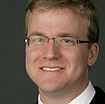Every preacher needs to be able to preach without notes on some occasions.
It is not a freakish skill that only some possess or a special style that only some need to cultivate. It is something every preacher can and sometimes needs to do. In another essay, I describe some ways that preachers might know when to preach with notes and when to preach without them. In this essay I want to suggest some ways to cultivate the ability to preach without notes when the situation calls for it. It can be helpful to distinguish between three different modes of preaching without notes.
Impromptu Preaching
What I will call impromptu preaching involves almost no preparation. It might arise when someone says, “Give us a word, preacher …” and then expects a word on the spot. It might arise in a service in which testimonies are welcomed or expected, but not prepared in advance. It might arise in the ebb and flow of a meeting about some issue, when what starts as a speech for the affirmative slips into a higher gear. Calls to impromptu preaching come through many parts of a pastor’s life.
Good impromptu preaching, like all good preaching, depends on the long-term habits of the preacher. If an athlete has been training for months, suddenly needing to run half a mile through two long terminals to catch a plane is not a problem. And if a preacher is immersed in regular study, prayer, works of justice, and talk of God, being called to preach on the spot can be a gift to all those gathered — including the preacher herself. There is no substitute for the daily habits of a preaching life. And when those habits form a preacher’s life, questions of rhetorical technique tend to answer themselves.
That said, attention to technique can itself be part of a faithful preaching life. Impromptu preaching can be strengthened especially through attention to four rules of thumb. As rules of thumb, these are not the strict dicta of technique. They are rather rough, fallible guides formed through reflection on the practices of actual preachers. They will almost surely need to be modified, supplemented, and selectively ignored in order to be useful for any individual preacher in any particular setting. But a rough guide can still be useful as a place to start.
- Say one thing. Preachers sometimes feel obliged to have three points (or five or six) but most impromptu situations allow time to conceive and articulate just one strong idea. And one idea — like “Repent, for the kingdom of heaven is near!” — can do all the work a sermon needs to do.
- Play your riffs. Like blues players, good preachers tend to have a rich stock of deep and simple phrases that they go to again and again. These might be quotations from Scripture or just phrases that communicate the heart of what the preacher understands the Gospel to be. An impromptu sermon might open with a riff to get the preacher rolling. It might rely on riffs to mark transitions or to bring the sermon to a close. Such riffs can slip into empty repetition. But they can also be enduring and concise statements of what a preacher believes — or longs to believe — most passionately.
- Don’t be afraid to pause. In any mode of preaching without notes, preachers can feel tempted to try to talk their way into making sense. But even when the preacher eventually gets around to making sense, he’s usually lost listeners in the process. It is better just to pause and wait for sense to come. A pause invites closer attention. It creates suspense. It leaves room for the listeners to think for themselves. And it shows respect for the task of proclamation.
- Before you start, know how you will end. Preachers sometimes want to use the few seconds they have for planning an impromptu sermon to work through the sermon as a whole. But this usually does not allow time to plan the ending and so the ending sometimes gets bungled or endlessly deferred as the preacher hunts around for when and how to stop speaking. If you have time to plan only one thing, plan the ending. If you know where you’re going, you can figure out how to get there on the fly.
Extemporaneous Preaching
If impromptu preaching happens with little warning, what I will call extemporaneous preaching allows for some focused time for preparation. Extemporaneous preaching involves working from an outline. The outline might be memorized or on a card or screen the preacher can see. Some preachers make extemporaneous preaching their usual style. Others make use of it for services when they do not have as much time to prepare as they might like as for a funeral, or a wedding sermon right before a Sunday sermon, or for the string of sermons demanded during Holy Week. Whatever the occasion, these rules of thumb can guide preparation of a good extemporaneous sermon:
- Craft a strong, clear structure for the sermon. An outline, even if it is set- aside in the preaching moment, is usually the best tool for developing this structure. The outline should have a clear, logical flow. Each of its moves should feature a complete sentence. If a move is just labeled with a topic word like “Grace,” for instance, a preacher might not yet know exactly what work she needs this move to do. But if the move is headlined by “Sometimes grace comes through the most despicable people,” then the preacher knows where she is going. Most good extemporaneous sermons won’t have a lot of structure underneath the main moves or points. Points within points within points can be too much for a preacher — or a listener — to remember. Keep the structure simple.
- Talk your way to the sermon. For most preachers the best way to prepare for an extemporaneous sermon is to make an outline and then add flesh to that outline by talking it through. The sermon can be composed primarily in speech, rather than in print that then must be transformed into memory and then into speech. A preacher might memorize a very few key phrases of an extemporaneous sermon, perhaps the first and last sentences, or an especially potent statement of one of the most important moves. Most of the sermon, though, can be outlined in writing, composed in speech, and then recomposed in the act of preaching.
- Work out the beginning and the ending of the sermon in more detail. It can be fine — even good — to leave the middle sections open to improvisation. But confidence about how you plan to begin and clarity about how you plan to end can make the whole sermon much stronger.
Digested Manuscript
Like an extemporaneous sermon, a sermon from what I will call a digested manuscript is composed through a mixture of speaking and writing. Preaching in this style requires extensive time for preparation. It involves writing out a complete manuscript of the sermon, digesting that manuscript deeply, and then setting aside the manuscript to preach the sermon without notes of any kind. Digesting a manuscript is not the same as memorizing it word-for-word. Digestion rather requires internalizing the sense, form, and key phrases of a manuscript and then bringing that internalized manuscript to life in speech. These rules of thumb can help:
- Craft a strong, clear, and simple structure. If you can’t memorize it easily, the fault is probably not in your memory. It is in the structure. A well-structured sermon will propel you from one move to the next.
- Write the manuscript out. Writing out a manuscript can have several advantages over more extemporaneous modes of preaching. It can help the preacher clarify her thoughts in advance. It can give the preacher a medium in which to develop phrases of particular beauty, precision, and faithfulness. It can make the sermon easier to share through digital or printed copies. And — not least! — it usually helps the preacher preach a shorter sermon that gets more directly to the point.
- Use typographical devices — like boldface, italics, and underlining — to mark the lines that convey the structure of the sermon, the transitions between moves, and phrases that you want to say exactly as you’ve written them.
- Memorize these marked lines. It can be especially helpful to memorize the opening and closing lines of each move or paragraph. Then you’ll know how you want to begin each move, how you want to end it, and how to get to the next one. Don’t try to memorize anything else beyond these structural elements except a favorite phrase or two. You can fill in the substance of each move with talk that is more loosely tied to what you’ve written.
- Learn the sermon by speaking the sermon. Let your whole body help you remember the sermon. Speak it and move with it, not so much to “practice” it as to live into it. Gradually wean yourself from the manuscript until you are speaking most of the sermon without looking at any notes.
- Revise as you speak. As you talk your way through the sermon you’ll notice phrases that sound awkward or make the wrong kind of sense. Follow your instincts for how it should be said, then revise the text of the sermon to reflect these changes. Again, if something is hard to memorize, it is probably too complicated or a bad fit with the flow of the sermon. Consider revising it.
- Work back and forth between big pictures and close-ups. That is, think about the overall structure of the sermon. Then talk through the sermon or some part of it. Then go back to the structure. This kind of back and forth can help a preacher move from memorizing to the deeper work of digestion.
- Prepare in a very quiet, focused way right before the sermon. While a fully internalized sermon relies on long-term memory, learning key phrases verbatim tends to involve short-term memory. It can be difficult to protect this time right before a service.
But protected time before worship can allow for intense prayer and concentration that lets a preacher be present in the whole service. Protecting time before worship can also be a sign to a congregation of how much worship matters. And, really, most things can wait. When the time comes to preach, do not take the manuscript into the pulpit with you. If you don’t have it, you won’t need it. - Preach the sermon, don’t recite it. Recitation tends to divide consciousness, pulling part of the preacher’s attention to the effort of remembering or reconstructing what was on the page. Preaching, on the other hand, demands a more complete sort of presence in the moment. Don’t be concerned if you skip part of the manuscript as you preach the sermon. The editing process continues right through the end of delivery. Very often a preacher will be focused in the moment, fully inhabiting the train of thought in a sermon, and then leap over text that was on the page. When that happens, it usually means that the “forgotten” text was never fully integrated into the flow of the sermon. It won’t be missed.
All three of these modes can take some time to learn well. Sometimes preachers try once to preach without a manuscript, struggle, and vow never to do it again. But it is worth remembering that most first sermons with a manuscript are also marked by struggles. Preaching without notes, like any other kind of preaching, takes practice. But impromptu, extemporaneous and digested manuscript sermons are all modes of preaching that almost everyone can learn over time.

